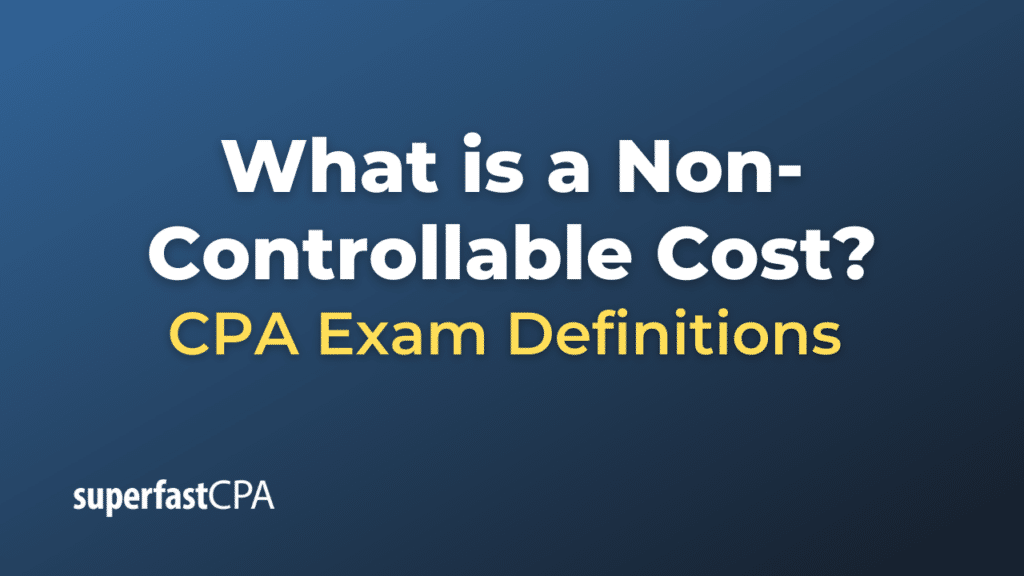Non-Controllable Cost
Non-controllable costs, also referred to as uncontrollable costs, are expenses that cannot be altered or influenced by a particular person or department within an organization in the short term. They’re often fixed costs that a company must pay regardless of its level of production or output.
These costs are usually managed at higher levels of the organization. For example, a factory manager may not be able to control costs such as corporate overheads, interest payments on loans, or depreciation of assets, as these costs are typically managed by the executive team or corporate headquarters.
Let’s consider an example. A department manager at a manufacturing plant can control certain costs like overtime pay, supply purchases for his or her department, or hiring of temporary staff. However, costs such as the company’s lease payment, property taxes, or company-wide insurance are considered non-controllable costs for this manager, since these decisions are made at a higher level and affect the entire organization, not just one department.
Example of a Non-Controllable Cost
Let’s imagine a company named “Tech Widgets Inc.” that manufactures electronic devices.
The manufacturing manager, Mr. Smith, has control over some costs in his department, like raw materials, labor costs, or equipment maintenance expenses. He can reduce labor costs by adjusting shifts or reduce raw material costs by negotiating with suppliers. These are his controllable costs.
However, some costs are beyond Mr. Smith’s control, these are non-controllable costs. For example:
- Depreciation: Tech Widgets Inc. invested in expensive manufacturing equipment a few years ago. This equipment depreciates over time, and this depreciation is a cost that Mr. Smith cannot control.
- Interest Payments: The company might have taken loans to finance its operations or investments. The interest paid on these loans is a cost that Mr. Smith cannot influence.
- Corporate Overheads: Costs like executive salaries, central office rent, company-wide insurance, or accounting fees are managed at a higher level and cannot be controlled by Mr. Smith.
Even if Mr. Smith manages his department as efficiently as possible and minimizes all the controllable costs, these non-controllable costs will still affect the overall cost structure of his department and the company. Therefore, when assessing the performance of a department or its manager, it’s important to distinguish between controllable and non-controllable costs.













